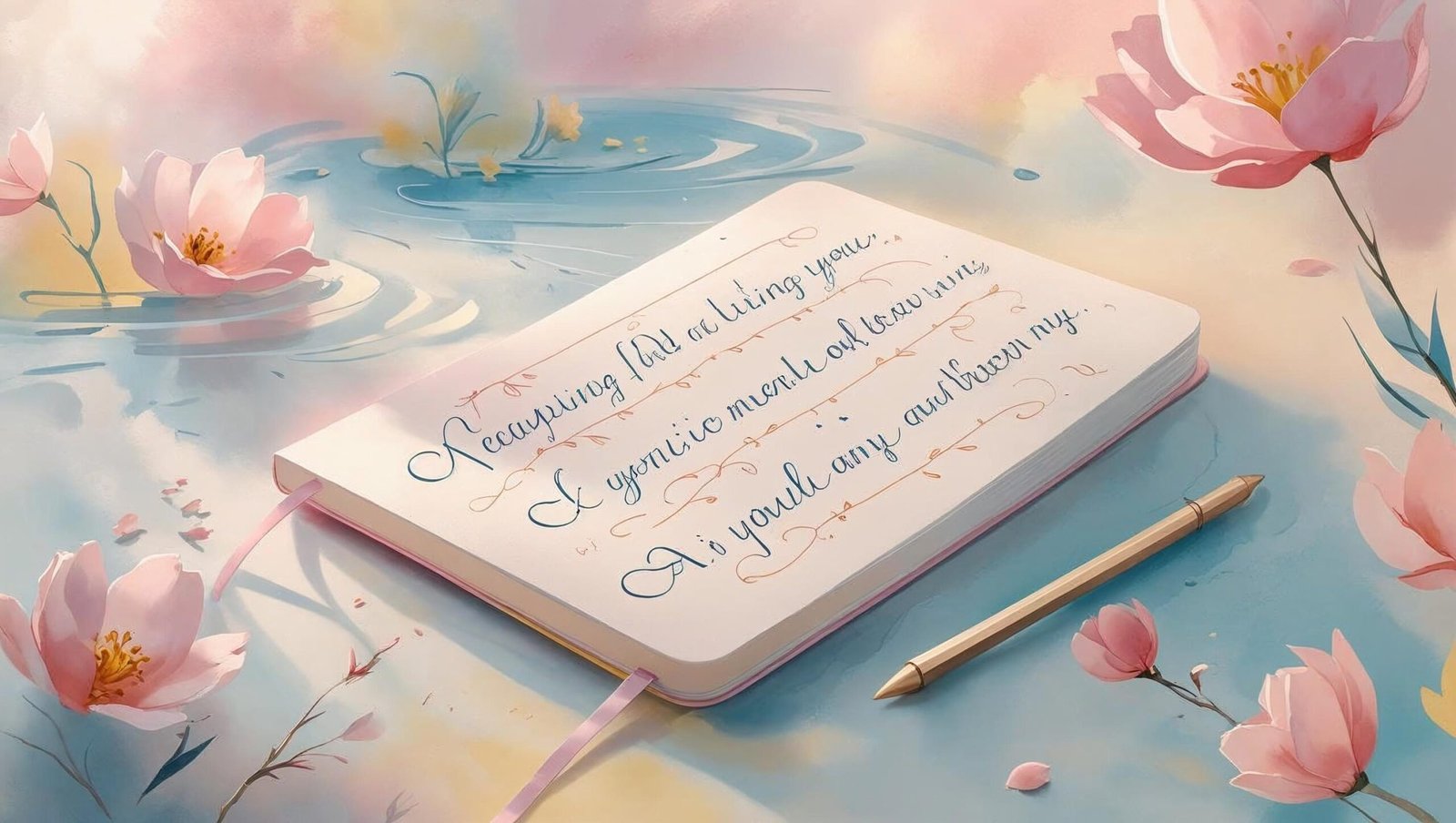Introduction: The Power of Simple Words to Heal
In a world often inundated with chaos, uncertainty, and pain, few literary works offer a genuine balm to the soul. The Comfort Book by Matt Haig is one such treasure—an eloquent, deeply personal collection of notes, thoughts, lists, and meditations that provide solace in times of distress. With its affirming, life-affirming tone and poignant truths, it is no exaggeration to say that The Comfort Book by Matt Haig feels like a hug in printed form.
This book is not about lofty philosophies or complicated jargon—it is about life, loss, resilience, mental health, and above all, hope. The strength of The Comfort Book by Matt Haig lies in its accessibility and emotional resonance. Each page speaks to a wounded part of us and offers the warmth of understanding and the clarity of perspective.
Let us delve deep into this profound work and explore 15 life-changing insights from The Comfort Book by Matt Haig.

1. You Are Enough Even When You Feel Broken
The most persistent message of The Comfort Book by Matt Haig is that you do not have to be perfect to deserve love or peace. Society often equates productivity with worth, but Haig gently reminds us that simply existing is enough. You are not broken—you are beautifully human.
2. There Is No Wrong Way to Feel
Emotions, as Haig affirms, are not moral judgments. Sadness is not a failure. Anxiety is not weakness. Joy is not frivolous. The Comfort Book by Matt Haig embraces all emotional states with compassion and without stigma, which is deeply validating for readers struggling with mental health.
3. Healing Is Not Linear
Recovery, whether emotional or psychological, rarely follows a straight path. Haig’s personal narrative in The Comfort Book by Matt Haig portrays a realistic and humane view of healing—a journey marked by setbacks, pauses, and incremental progress.
4. Comparison Is a Thief of Joy
In our digital age, constant comparison often breeds inadequacy. Haig urges us to break free from this toxic cycle. The Comfort Book by Matt Haig celebrates individuality and invites us to reclaim our lives from the shadow of others.
5. Happiness Is Not a Destination
We often postpone our happiness for a future moment of success, stability, or approval. But Haig challenges this flawed narrative. According to The Comfort Book by Matt Haig, happiness can—and must—be found in the present, in simple joys and quiet moments.
6. Pain Does Not Negate Beauty
Even in despair, beauty exists. A sunrise, a song, a warm cup of tea—these fleeting moments remind us that darkness cannot extinguish light. The Comfort Book by Matt Haig encourages us to notice and cherish such glimmers, especially in hard times.
7. It’s Okay to Do Less
Productivity culture glorifies exhaustion. Haig rebels against this in The Comfort Book by Matt Haig, validating the act of resting, saying no, and simply breathing. Doing less is not laziness—it is self-preservation.
8. You Are Not Alone in This World
Isolation often magnifies suffering. Through his candid stories, The Comfort Book by Matt Haig breaks the illusion of solitude. So many people feel what you feel. Reading this book makes one feel profoundly seen and understood.
9. Nature Heals
From forests to oceans, the natural world offers immense healing. Haig, in The Comfort Book by Matt Haig, beautifully articulates how reconnecting with nature can reset our minds, ease anxiety, and ground our spirits.
10. Let Go of “Should”
One of the most liberating messages of The Comfort Book by Matt Haig is to stop should-ing yourself. “I should be happier.” “I should be more successful.” These self-imposed expectations steal our peace. Letting them go is an act of grace.
11. Love Is the Ultimate Anchor
Haig repeatedly emphasizes love—not the romantic kind alone, but the love of family, friendship, and self. The Comfort Book by Matt Haig affirms that love remains the most powerful force for healing and transformation.
12. Life Is Not a Race
The pressure to have it all figured out by a certain age is immense. But The Comfort Book by Matt Haig dismantles the myth of timelines. Life unfolds uniquely for each of us, and we owe ourselves the patience to let it bloom organically.
13. Existential Thoughts Are Normal
Many people battle existential dread in silence. Haig acknowledges this openly in The Comfort Book by Matt Haig, normalizing these questions and urging us to seek wonder rather than fear in the vast unknown.
14. Gratitude Is a Form of Resistance
When life is hard, gratitude feels difficult—but that’s when it matters most. The Comfort Book by Matt Haig champions the practice of appreciating the little things as a way to reclaim joy and meaning even in adversity.
15. The Future Is Unwritten
Lastly, Haig reminds us that life always holds room for surprise. The Comfort Book by Matt Haig closes with the quiet yet profound reassurance that change is always possible, no matter how final things may seem.

Exploring the Emotional Architecture of Comfort
What makes a book comforting? Is it the language, the message, or the space it holds for human vulnerability?
While there are many self-help books filled with advice, statistics, and action plans, very few possess the capacity to truly cradle the reader’s soul. The Comfort Book by Matt Haig is one such exception—a quiet masterpiece that abandons the urgency to fix and instead embraces the gentle art of acceptance. But what gives it this potency? The answer lies in its emotional architecture.
Matt Haig doesn’t offer neat formulas or ten-step guides. He offers something far more radical—emotional permission. Permission to feel lost. Permission to feel tired. Permission to just be.
The book is stitched together from fragments, each standing alone and yet together forming a mosaic of resilience. This fragmented style mirrors the disjointed nature of the human experience. Life rarely unfolds in neat chapters. Our lives are often scattered with starts and stops, regressions and bursts of clarity. Haig’s structure honors that chaos instead of resisting it.
A Symphony of Silence and Sound
What also makes this book exceptional is how it captures both silence and sound. Some pages offer a single thought—no more than a few words—yet they echo like a bell long after you’ve turned the page.
For example:
“Nothing is stronger than a small hope that doesn’t give up.”
There is no verbose elaboration. No sermonizing. Just a simple sentence with seismic emotional weight.
In this minimalist approach, Haig aligns himself with poetic traditions. Like a haiku, some of his reflections strike a resonance beyond their form. There’s as much value in what is unsaid as what is said. This restraint is what sets his writing apart from much of contemporary self-help literature, which often seeks to fill silence with instruction.
The Language of the Heart
There is something quietly revolutionary in writing that seeks not to impress but to connect. And Haig’s language does exactly that—it bypasses the analytical mind and speaks directly to the heart.
He avoids clinical terminology or philosophical jargon. Instead, he relies on metaphors, memories, and metaphysical reflections. These are tools not of persuasion, but of intimacy. He speaks as one who has suffered, not as one who has studied suffering.
This is why The Comfort Book by Matt Haig feels less like reading and more like being listened to.

Comfort in a Time of Global Anxiety
The world in recent years has become increasingly unstable—marked by pandemics, political unrest, climate anxiety, and economic uncertainty. In such a climate, the very idea of comfort can feel elusive or even naïve.
Yet, comfort is exactly what we need—not as an escape, but as fuel for resilience. Comfort allows us to breathe again. It reconnects us with our humanity. It reminds us that even in moments of despair, life still holds beauty, humor, kindness, and hope.
Haig’s book is especially relevant now, because it addresses a universal ache. It offers no solution to external chaos, but it does offer internal anchoring. It is a reminder that while we may not control the storm, we can learn to shelter ourselves emotionally.
The Reader as Co-Creator
One of the most beautiful aspects of the book is that it invites the reader to participate. This is not a passive read. You don’t simply absorb what Haig writes—you complete it with your own inner dialogue.
When he leaves thoughts open-ended or asks rhetorical questions, he is inviting you to reflect, question, and expand. In doing so, you become co-author of your comfort.
For instance, when Haig writes, “Your value never lies in a future you might attain,” he is not just stating a fact. He is nudging you to examine the ways you tie your worth to your ambitions or achievements.
Lessons You Can Apply in Daily Life
Although the book lacks a traditional self-help format, it is brimming with practical wisdom. Here are some ways you can internalize its messages:
1. Create a Personal Comfort List
Inspired by Haig’s own “Comfort List” in the book, create your own. Write down moments, memories, quotes, songs, or even meals that bring you peace. When you feel ungrounded, return to the list.
2. Permit Yourself to Pause
Modern life glorifies busyness. But as Haig repeatedly reminds us, rest is not a reward. It is a necessity. Give yourself permission to take breaks without guilt.
3. Embrace Emotional Honesty
Instead of masking your true feelings, acknowledge them. Emotional honesty is the first step toward healing. Cry if you need to. Say you’re tired if you are. Vulnerability is not weakness—it is courage.
4. Disconnect to Reconnect
Spend time away from screens. Reconnect with nature, books, loved ones, or even solitude. The comfort Haig speaks of often resides in silence, not stimulus.
5. Choose Gentle Words When You Speak to Yourself
Haig’s tone is never harsh. Let that influence your own inner voice. Speak to yourself with the same kindness you would extend to a child or a close friend.

Comfort Is Not Complacency
One critique often levied at comforting literature is that it may encourage complacency or avoidance. But this misunderstands the nature of true comfort.
Real comfort does not numb us—it fortifies us.
When we feel safe, heard, and supported, we are more likely to take healthy risks, face our challenges, and seek growth. In other words, comfort is not the opposite of change. It is the foundation of change.
The Comfort Book by Matt Haig recognizes this nuanced truth. It encourages readers to sit with themselves, gather strength, and move forward at their own pace.
The Book as a Ritual Object
There is also something sacred in the way this book is meant to be used. It’s not linear. It doesn’t ask you to finish it in one sitting. It can be read at dawn or at 2 AM, during panic attacks or while sipping tea.
Some books you read once and shelve. Others, like this, become part of your emotional toolkit.
You may revisit certain pages a hundred times. And each time, the words will meet you differently, depending on your emotional state.
In this way, The Comfort Book by Matt Haig becomes a kind of literary talisman—an object not merely of knowledge, but of emotional ritual.
On Matt Haig’s Unique Role in Mental Health Literature
Matt Haig occupies a unique space in contemporary writing. He straddles fiction, memoir, and mental health commentary with remarkable grace. His work is never impersonal. He does not write from a distance—he writes through experience.
Having struggled with severe depression and anxiety himself, Haig brings the authenticity that cannot be mimicked or manufactured. He offers not just empathy, but evidence of survival.
This lived perspective is what makes his books resonate so deeply, especially The Comfort Book by Matt Haig, which feels like the distilled essence of everything he’s learned about life and the human condition.
A Final Word on the Nature of Comfort
Comfort, in its truest sense, is not about denial. It is about gentle acknowledgment. It is not about pretending things are fine. It’s about affirming that even when they’re not, you will be okay.
It is not about escaping pain. It is about accompanying yourself through pain.
The Comfort Book by Matt Haig teaches this lesson with quiet elegance. And in a world so hungry for peace, it offers a feast of emotional nourishment.
Whether you are battling depression, enduring loss, navigating burnout, or simply seeking a gentler outlook on life, this book will meet you where you are.
Writing Style: Simple Yet Soulful
One of the most commendable aspects of The Comfort Book by Matt Haig is its style—concise, relatable, and poetic. It feels less like reading and more like being in conversation with a friend who knows exactly what to say when you’re at your lowest. There is no preaching or philosophising—only truth spoken with kindness.

Why This Book Matters More Than Ever in 2025
Mental health conversations have become more prominent, but the inner battles many people face remain under-addressed. In 2025, where global uncertainty and burnout are at an all-time high, The Comfort Book by Matt Haig serves as a crucial antidote—a manual for surviving and thriving in an increasingly complex world.
It is not just a book. It is a companion.
Frequently Asked Questions (FAQs)
Q1. Is The Comfort Book by Matt Haig suitable for all ages?
Yes. The language is accessible, and its themes are universally relevant—from teenagers to adults seeking emotional clarity.
Q2. Is this book a memoir or self-help?
It is a hybrid. While The Comfort Book by Matt Haig includes autobiographical insights, it also functions as a self-help guide through its affirmations and reflections.
Q3. How is this book different from Matt Haig’s other works?
Unlike Reasons to Stay Alive or Notes on a Nervous Planet, this book is structured in fragments and is more meditative than narrative. It focuses on comfort, not explanation.
Q4. Can I read it non-linearly?
Absolutely. The Comfort Book by Matt Haig is meant to be picked up at any page and read based on your emotional needs.
Q5. Is this a good book to gift someone going through tough times?
Yes. It is deeply healing and makes for an incredibly thoughtful gift for anyone struggling with stress, anxiety, grief, or depression.
Conclusion: A Warm Blanket in Book Form
In conclusion, The Comfort Book by Matt Haig is more than a book—it is emotional refuge. It is a book you do not simply read; you feel it. It provides the permission to be human, the language to understand your pain, and the courage to keep going.
For anyone who has ever felt overwhelmed by the weight of the world—or their own thoughts—this book is a sanctuary. It proves that you are not alone, your life has meaning, and healing is not only possible—it is your birthright.
If you’re seeking a literary companion that embraces your fragility and helps you rediscover strength, look no further than The Comfort Book by Matt Haig.
For more such honest and thoughtful book reviews, visit:
👉 shubhanshuinsights.com
Join a growing community of readers who believe in the power of words to change lives.